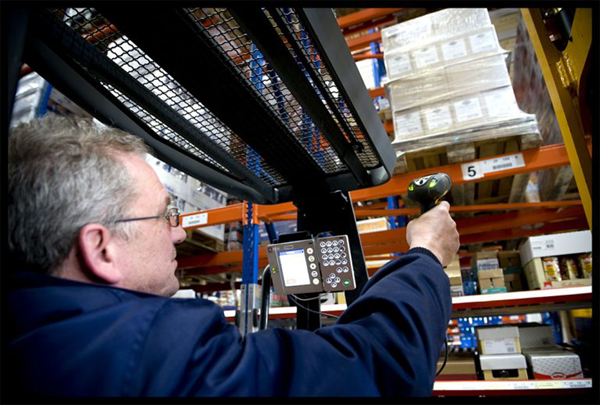What is Automatic Identification and Data Capture? How Does It Work?


Automatic Identification and Data Capture (AIDC) has revolutionized the way businesses collect, process, and manage data across various industries. This cutting-edge technology encompasses a range of solutions that automatically identify objects, collect data about them, and enter that information directly into computer systems without human involvement.
From retail and manufacturing to healthcare and logistics management, AIDC has become an indispensable tool for enhancing efficiency, accuracy, and productivity.
At its core, AIDC technology combines hardware and software components to streamline data collection and management processes. By eliminating manual data entry, it significantly reduces human error, speeds up operations, and provides real-time visibility into various aspects of business processes.
Common AIDC technologies include barcode systems, radio frequency identification (RFID), biometrics, magnetic stripes, optical character recognition (OCR), and smart cards.
As organizations increasingly rely on data-driven decision-making, understanding the capabilities, applications, and potential of AIDC becomes crucial for staying competitive in today’s fast-paced business environment. This article delves into the intricacies of AIDC, exploring its key components, diverse applications, and the transformative impact it has on modern business operations.
Automatic Identification and Data Capture (AIDC) is a comprehensive technological process that enables the automatic collection, storage, and categorization of data without manual input. This advanced system combines various technologies to identify objects, gather information about them, and directly input that data into computer systems, eliminating the need for human intervention.
At its core, AIDC serves as a bridge between the physical and digital worlds, transforming tangible information into digital data that can be easily processed, analyzed, and utilized across various applications. The technology encompasses a wide range of methods and devices, each designed to capture specific types of data efficiently and accurately.
AIDC encompasses a diverse array of technologies, each with its own strengths and applications:
The versatility of Automatic Identification and Data Capture technology has led to its adoption across numerous industries:
By automating the data capture process, AIDC significantly reduces human error, increases efficiency, and provides real-time visibility into various aspects of business operations. As technology continues to evolve, AIDC systems are becoming more sophisticated, offering greater accuracy, speed, and integration capabilities with other enterprise systems.

AIDC refers to a relatively broad spectrum of specific technologies that employ it as an attribute. The list includes:
All of these technologies use AIDC in unique ways but are synthesized differently depending on the ins-and-outs of the processes.
Typically, though, the device takes images, sounds, or videos of the target and captures the data with the help of a transducer. Transducers differ depending on the application of the technology, whether it be a bar code, smart card, RFID, or something else, but the main objective is the same – to convert the sound, image, or video into a digital file.
From there, the captured data is then held in a database or automatically transferred to a cloud-based system. It is then that the data can be analyzed and/or categorized; this step is something that is determined by the software and how it works to integrate with the capturing device, whatever it may be.
Although AIDC covers a wide scope, the technology is mostly used for one of three things: 1) identification and validation, 2) asset tracking, and 3) interfaces to other systems.

When considering the benefits of employing Automatic Identification and Data Capture, one must first take a closer look at the technologies that are enhanced by it.
Because many of the aforementioned technologies involve the assessment and storage of information – some of it being sensitive information – there is always a concern of theft, fraud, and/or a displacement of data.
Let’s take a look at the use of Automatic Identification and Data Capture in regards to RFID, in particular. RFID tags are able to hold an impressive amount of information, but that doesn’t mean that the data is always secure. Because RFID work on radio waves, they can be hacked into, making this sensitive information available to anyone who might have the ability to chase after the valuable data.
Additionally, Automatic Identification and Data Capture is getting more and more advanced, like all technologies these days, but there is still not a seamless system, which means that it doesn’t always work as it should. Luckily, there is a large range of products that employ AIDC technologies.
Automatic Identification and Data Capture (AIDC) technologies have revolutionized data management across industries, offering significant improvements in efficiency, accuracy, and real-time visibility. From barcodes to biometrics, AIDC systems automate data collection and processing, reducing human error and saving valuable time and resources.
As technology advances, AIDC’s role in driving innovation and operational excellence continues to grow. Its integration with emerging technologies like AI and IoT promises even greater potential for data-driven decision-making and process optimization. For businesses aiming to stay competitive in an increasingly digital landscape, embracing AIDC is not just beneficial—it’s essential.
In essence, Automatic Identification and Data Capture represents a transformative toolset that streamlines operations, enhances productivity, and improves customer satisfaction. As we look to the future, the continued evolution and adoption of AIDC will undoubtedly play a crucial role in shaping business operations across all sectors.
Our sales engineers are experts in automatic asset tracking, tagging and identification,a nd can answer all your questions. Get in touch now.
Lets Talk ›Enter your information and get a free checklist of the top questions to answer and tips to plan a successful asset tagging project for any asset management or tracking system implementation.